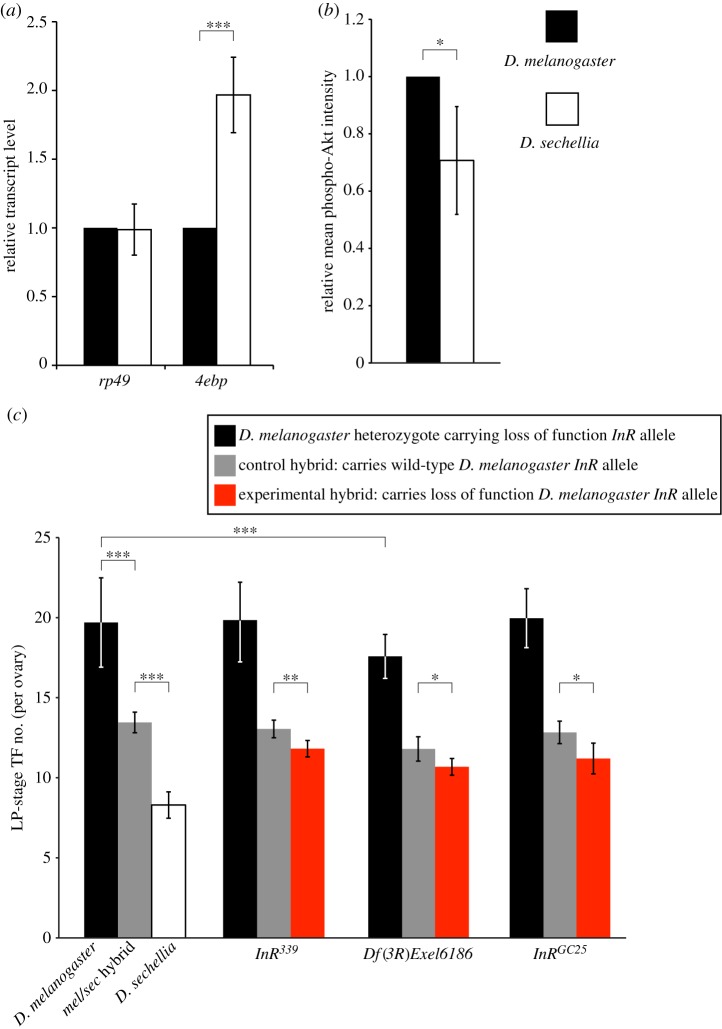Figure 2.
Differential IIS activity exists between D. melanogaster and D. sechellia. Quantified levels of (a) larval expression of the growth attenuator Thor (normalized to gapdh1) and the ribosomal protein gene rp49 and (b) phospho-Akt intensity in wandering third-instar larval ovaries of D. melanogaster compared with D. sechellia. (c) Left-most set of bars shows TF number in D. melanogaster (black bar), D. melanogaster/D. sechellia hybrid (grey bar) and D. sechellia (white bar) females. Remaining sets show adult ovariole number in D. melanogaster females heterozygous for InR loss of function mutation (black bars), and final TF number in D. melanogaster InR*/D. sechellia hybrids (where InR* is any of three different InR loss of function alleles; red bars) compared with D. melanogaster InR+/D. sechellia control hybrids (grey bars). Controls are sisters carrying a wild-type copy of D. melanogaster InR. n ≥ 10 for all genotypes. Error bars show 95% CI of means. Student's t-test in (a,c); Mann–Whitney (Wilcoxon) test in (b): ***p < 0.001, **p < 0.005, *p < 0.05.

